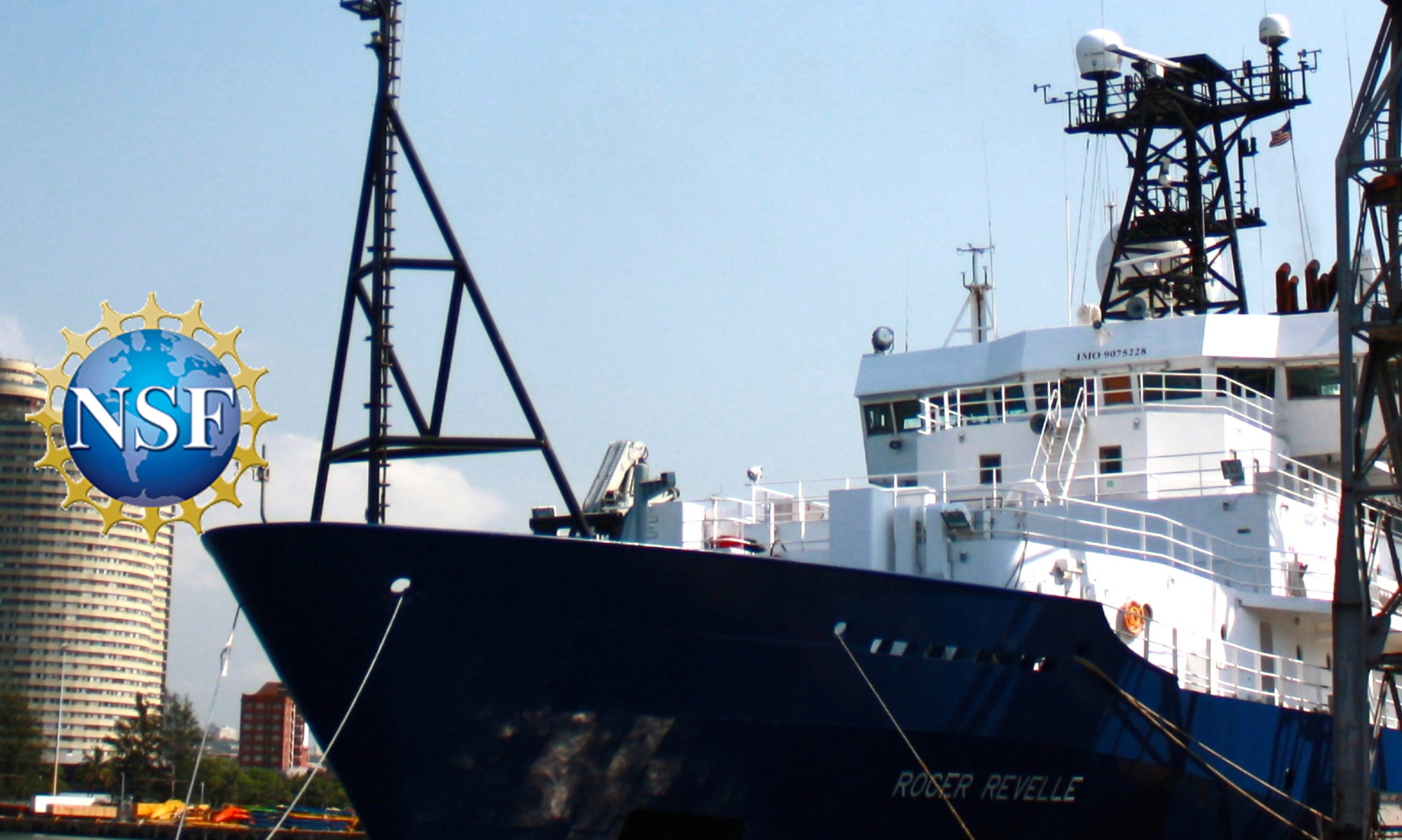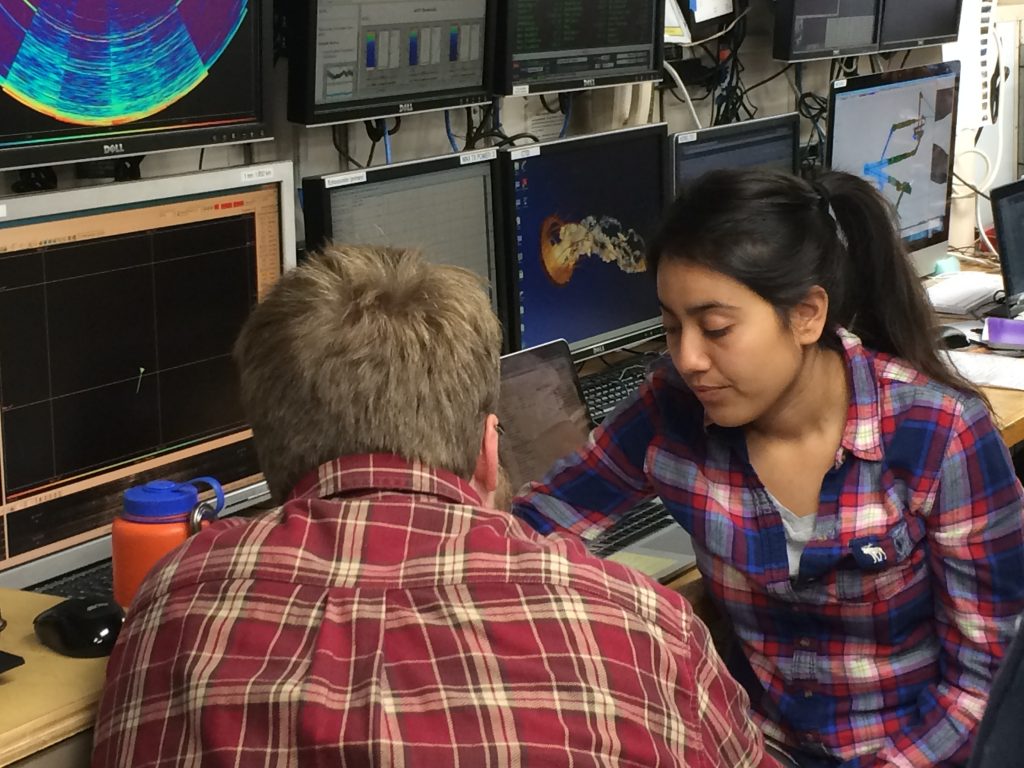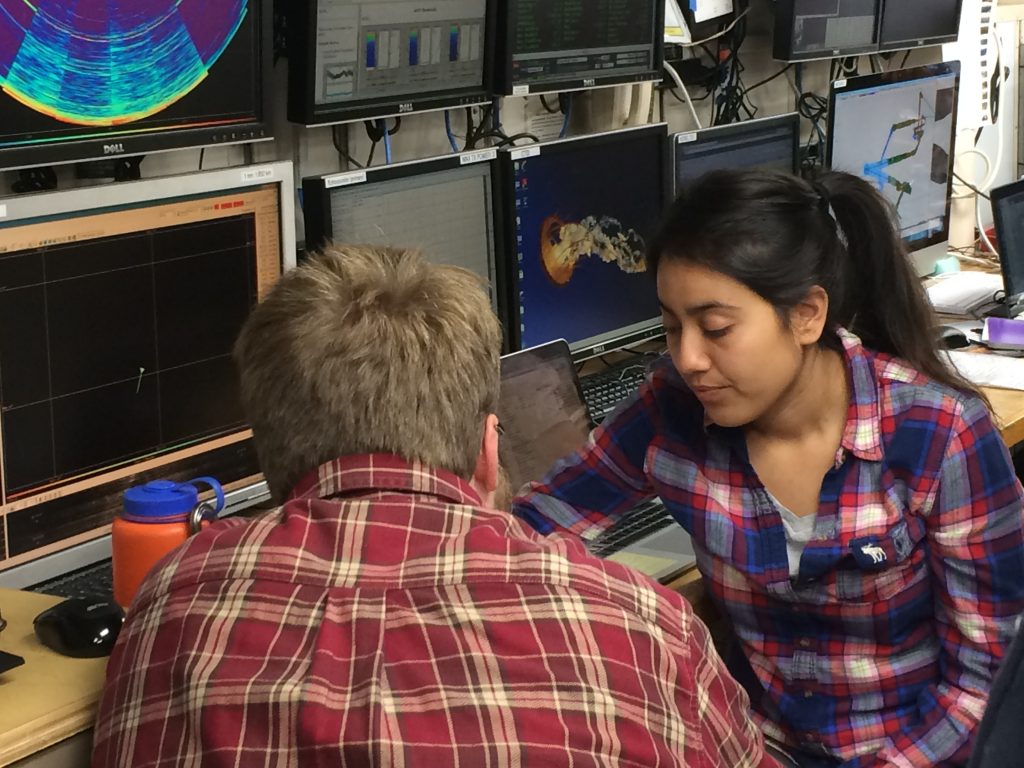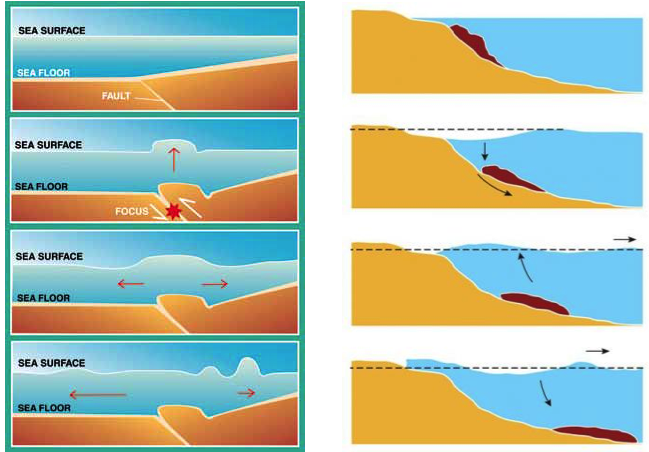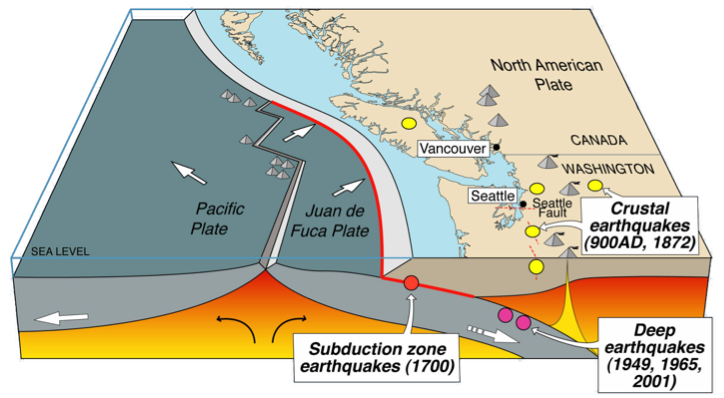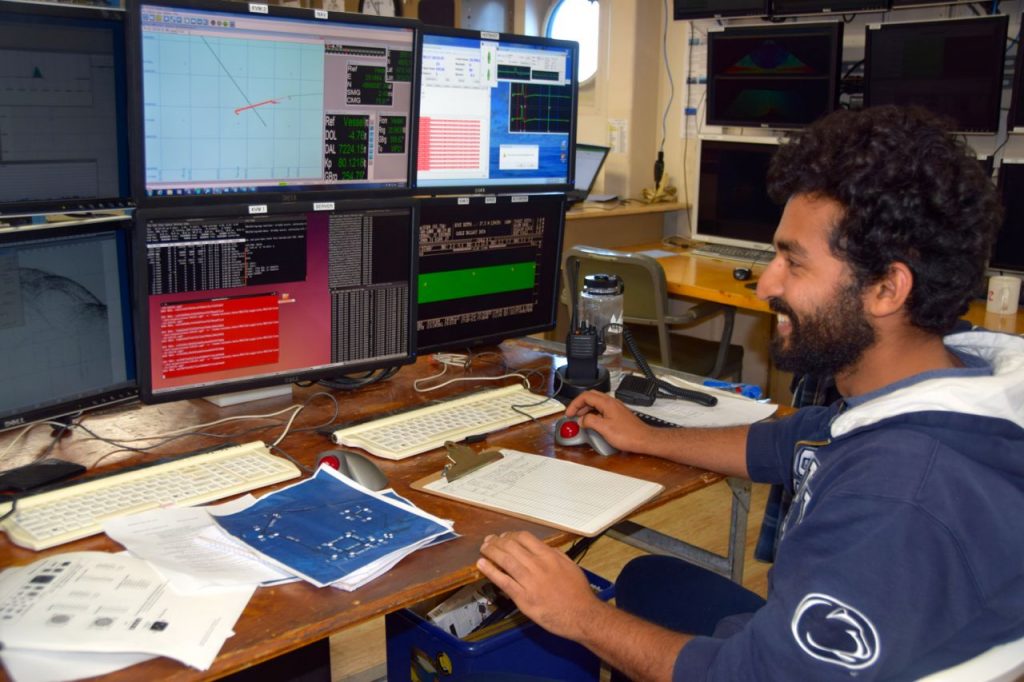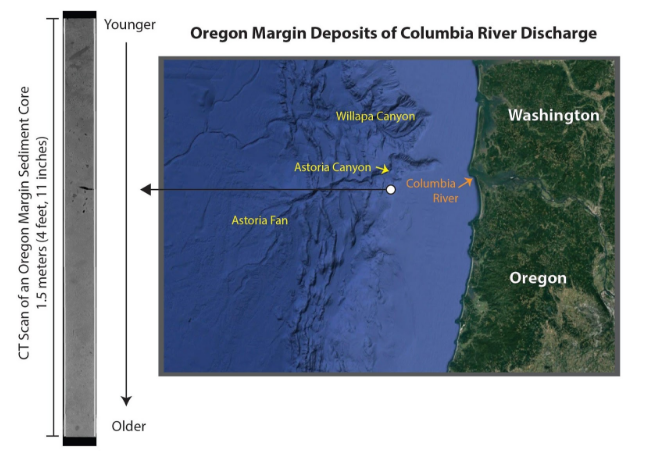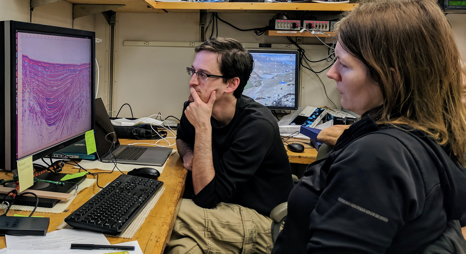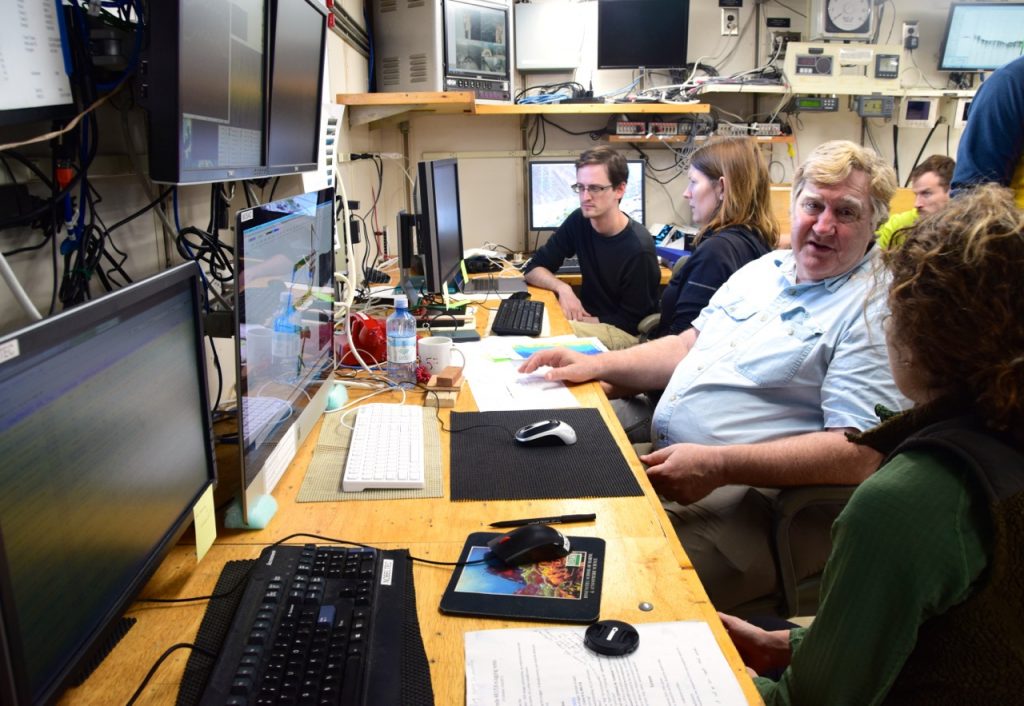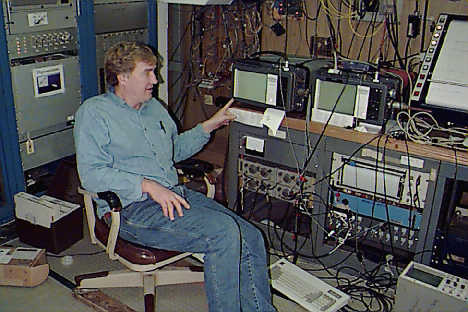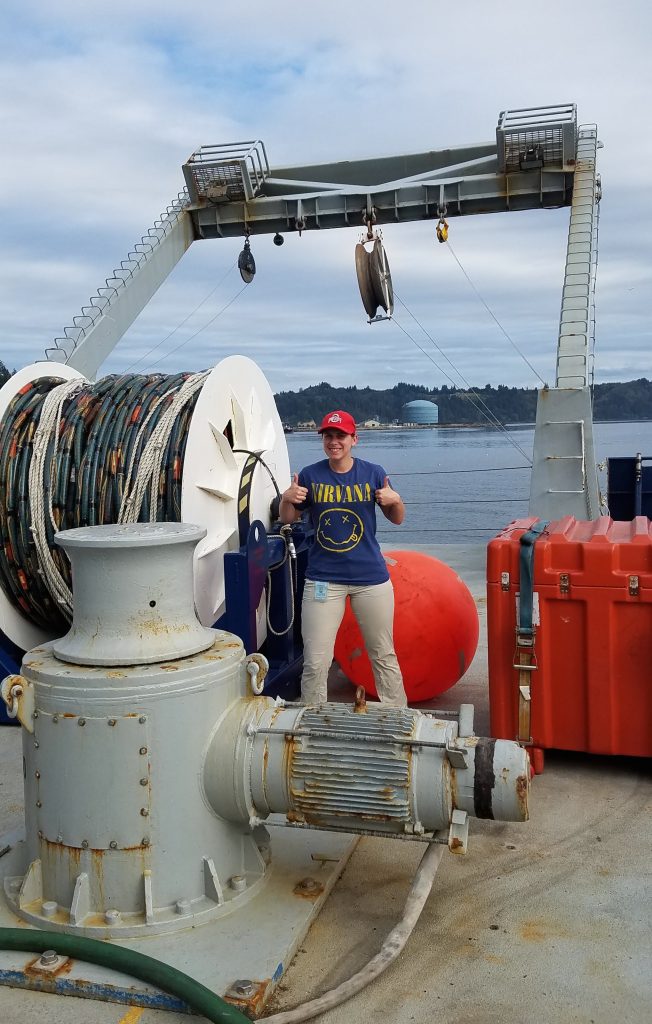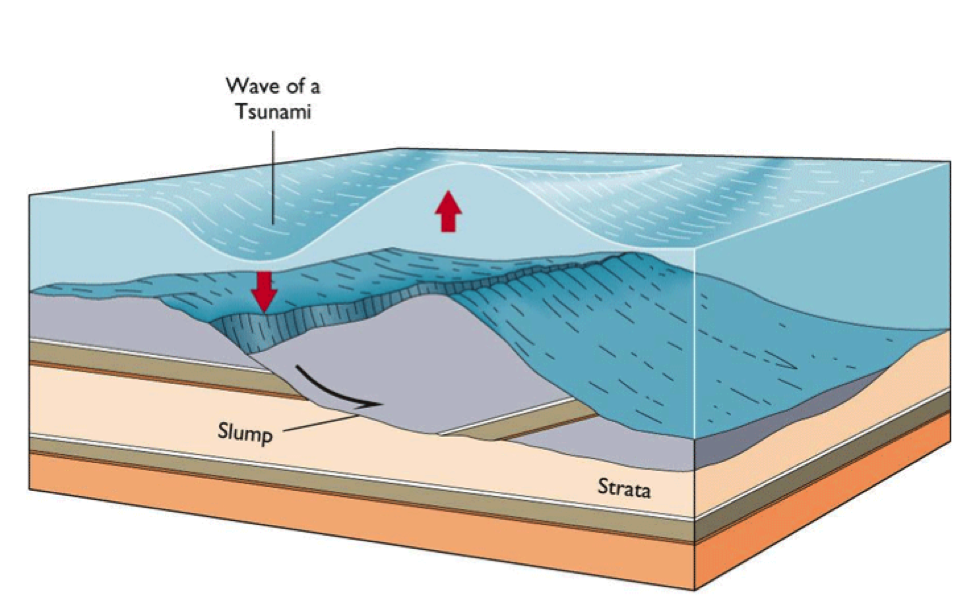By Collin Brandl
A major goal of this Early Career Scientist training expedition is giving the participants (a total of 19 “principal investigators” ranging from graduate students to postdocs to faculty) the chance to experience every part of what goes into a full seismic research expedition. One of the most important aspects is being the Chief Scientist during your shift, which means that you are in charge.

At the beginning of our watch group’s first shift in the ship’s computer lab (read: control center), from noon to 8 p.m. on Tuesday, our six-person group had to decide on our roles for the day. Graduate student Emily Schottenfels had already been involved in a meeting on the bridge with the Second Mate, so it felt right for her to be the Chief Scientist of our shift; I became the Co-Chief.
One might expect the Chief and Co-Chief Scientists to be figureheads of the watch, especially because we are just students. However, that is definitely not the case. Almost immediately, Emily and I had to run (safely) up the bridge to deliver an update with some changed latitude and longitude coordinates and an updated operation plan.
After this, Emily and I patrolled around the computer lab to make sure all the operations were running smoothly, especially once the gear was deployed and data was being acquired. We also had a discussion with Masako Tominaga and Anne Trehu, two of the project lead scientists, and Lee Ellet, a Scripps’ shipboard geophysical engineer, about the parameters for collecting seismic data. We needed to decide on the source spacing, the sampling rate, and how long we would record for. Ultimately, we chose for the ship to use the acoustic source and then move forward for 25 meters before using it again while we record from that point for 8 seconds and measure the signal every .5 milliseconds. Luckily there were no major issues that arose during our watch, just a few fishing boats that the ship needed to avoid.
Unfortunately, the smooth seas did not last for long (figuratively speaking). As we awoke on the second day of the cruise, we were slowly brought up to speed about some issues that occurred overnight. Luckily, we sailed with an exceptional crew and geophysical engineering team that worked quickly and effectively to solve the problem. It turns out that an important aspect of being the Chief Scientist is working with a variety of people across different groups to keep the expedition running smoothly. Coordinating with Lee, his engineers, and the crew in the engine room was very fast paced but rewarding. By the end of our second day, everything was back to normal and the data was coming in great.
By the end of both shifts/days, I can sincerely say that being the Chief Scientist (or Co-Chief) is badass. The opportunity to be out here at sea and to be in charge of “science-ing” helps to illuminate the future of someone interested in marine geology and geophysics research. You have to make a lot of split-second decisions, communicate a lot of messages to the science crew, and make sure every operation/scientist is running smooth. I am so happy to be here, to be learning, and to have had the chance to be in charge.
— Collin Brandl is a graduate student at the University of New Mexico
